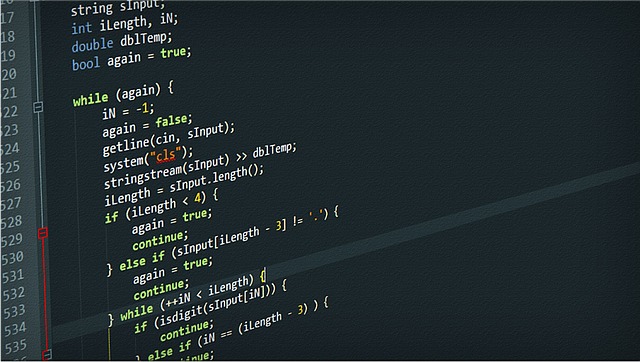understanding how to effectively mock functions in Jest is crucial for ensuring your JavaScript applications are robust and bug-free. This guide dives deep into the world of Jest and its powerful mocking capabilities, providing you with the knowledge to write more effective unit tests.
Why Mocking is Essential in Jest
Mocking is a technique used in testing to replace real implementations with controlled simulations. This allows developers to isolate the function or module under test and control its behavior. In the context of Jest, mocking becomes indispensable when dealing with external dependencies, asynchronous code, or simply to make tests more deterministic.
The Power of Mock Functions
Mock functions, often referred to as "spies", allow developers to track calls to the function, capture arguments passed to it, and manipulate its return value. This level of control is invaluable when testing functions with external dependencies.
Creating Mock Functions in Jest
To create a mock function in Jest, use the jest.fn() method:
const mockFunction = jest.fn();This creates a mock function that can be used in place of the real implementation. By default, the mock function will return undefined unless provided with an implementation.
Providing an Implementation
You can provide a mock implementation when creating the mock function:
const mockTrue = jest.fn(() => true);Or, you can change the implementation later using the mockImplementation method:
mockFunction.mockImplementation(() => false);Mocking Imported Functions
One of Jest's powerful features is the ability to mock entire modules. This is particularly useful when a module has external dependencies that you want to control in your tests.
How to Mock an Imported Function
To mock an imported function, use the jest.mock() method:
jest.mock('./path-to-module', () => {
return jest.fn(() => mockReturnValue);
});The first argument is the path to the module you want to mock, and the second argument is a factory function that returns the mock implementation.
Resetting Mocks Between Tests
To ensure that mocks do not interfere with other tests, it's a good practice to reset them between tests. Use the mockClear method:
beforeEach(() => {
mockFunction.mockClear();
});Advanced Mocking Techniques
Automocking with Jest
Jest can automatically mock a module without a factory function. This is known as automocking:
jest.mock('./path-to-module');With automocking, Jest replaces the real implementation with a mock that mimics the original module's API but provides mock implementations for all of its methods.
Mock Return Values
You can control the return value of a mock function for specific calls using the mockReturnValueOnce method:
mockFunction.mockReturnValueOnce(true).mockReturnValueOnce(false);Mock Implementations
For more complex use cases, you can provide a custom implementation for a mock function:
mockFunction.mockImplementation(input => {
if (input === 'specialValue') {
return 'specialReturn';
}
return 'defaultReturn';
});Mocking Asynchronous Functions
In today's web development landscape, asynchronous operations are ubiquitous. Whether you're fetching data from an API or reading from a database, understanding how to mock asynchronous functions is crucial.
Mocking Promises
Promises are a common way to handle asynchronous operations in JavaScript. Jest provides tools to mock them effectively.
To mock a promise that resolves:
mockFunction.mockResolvedValue('resolved value');To mock a promise that rejects:
mockFunction.mockRejectedValue(new Error('error message'));Mocking Async/Await
When working with async/await, you can mock the asynchronous function just like any other function. However, ensure that your mock returns a promise:
mockFunction.mockResolvedValue('async resolved value');Mocking Event Handlers
Event handlers are a staple in frontend development. They often contain side effects, making them prime candidates for mocking.
Mocking DOM Events
To mock a DOM event handler, simply replace the event handler function with a Jest mock function:
const mockClickHandler = jest.fn();
document.querySelector('button').addEventListener('click', mockClickHandler);You can then simulate events in your tests and assert that the mock function was called.
Best Practices for Mocking with Jest
- Isolation: Ensure that the function or module under test is isolated from external dependencies. This makes your tests more deterministic.
- Reset Mocks: Always reset your mocks between tests to prevent unintended side effects.
- Avoid Over-mocking: While mocking is powerful, avoid mocking everything. Test real implementations where possible to ensure the actual behavior is correct.
- Descriptive Mock Names: Name your mock functions descriptively to make your tests more readable.
Conclusion
Mocking is a powerful tool in a developer's testing arsenal. By understanding and mastering Jest's mocking capabilities, you can write more deterministic, robust, and effective unit tests. Whether you're a seasoned developer or just starting out, embracing these techniques will elevate the quality of your code and applications.
Frequently Asked Questions (FAQs)
1. Why is mocking important in unit testing?
Mocking allows developers to isolate the function or module under test, ensuring that external dependencies or side effects do not influence the test outcome. This leads to more deterministic and reliable tests.
2. How do I mock a function that’s not exported?
Jest's module mocking capabilities allow you to mock any function within a module, even if it's not exported. Use jest.mock() and provide the path to the module.
3. Can I mock native browser APIs with Jest?
Yes, Jest allows you to mock native browser APIs, such as fetch or localStorage. This is useful for testing functions that interact with these APIs.
4. How do I ensure my mocks are being used in tests?
Jest provides methods like mock.calls and mock.results on mock functions. These can be used to assert that the mock was called a specific number of times or with specific arguments.
5. Are there scenarios where I shouldn’t use mocking?
While mocking is powerful, it's not always the best approach. For integration tests or end-to-end tests, it's often better to test the real implementations to ensure the entire system works together correctly.


